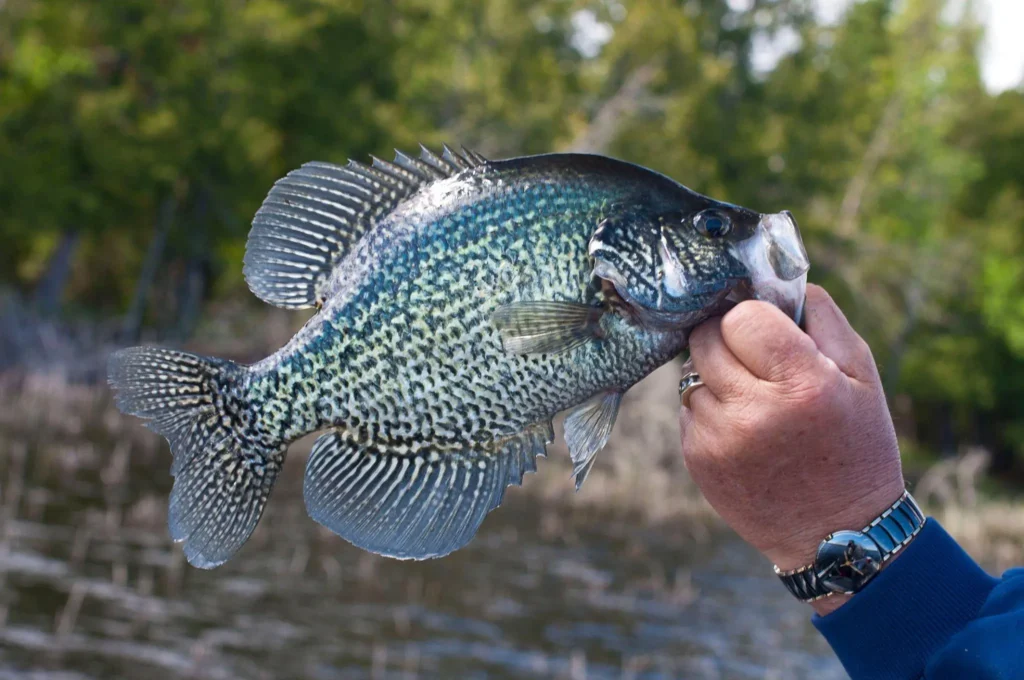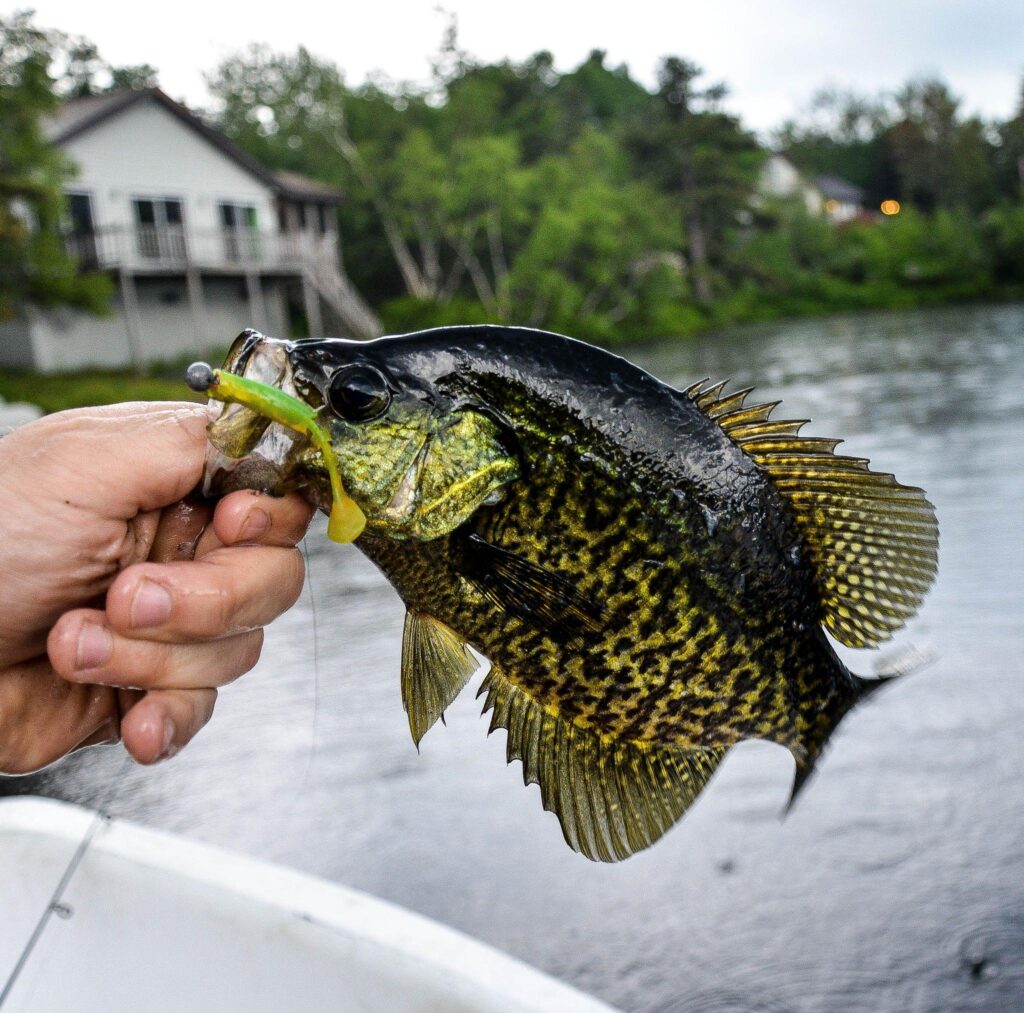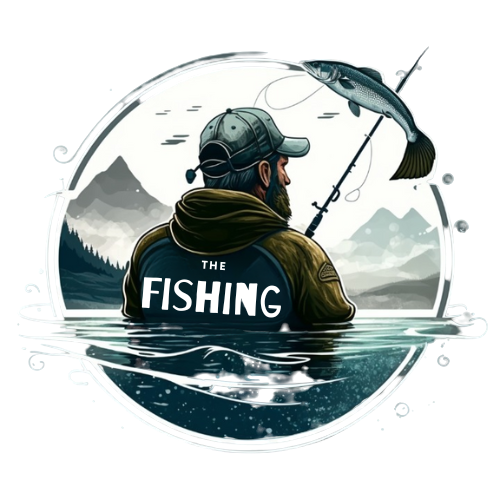Crappie, a popular freshwater fish among anglers, can indeed bite after rain. However, their activity and biting behavior depend on several factors.
You may also like to know: Is fishing good after rain?
In this guide I will delve into these factors and provide insights into how crappie behave during and after rainfall.

Table of Contents
Crappie Activity During and After Rainfall
Rain can influence the behavior of crappie, making them more active in the water. This increased activity can lead to different fishing strategies being more effective. For instance, you might find that certain lures or baits that didn’t work before the rain suddenly become attractive to crappie.
Fish Behavior After Rain
It’s important to note that fish, including crappie, can act differently after a good rain. There are times when it seems like they won’t bite anything you put in front of them. This change in behavior could be due to several reasons, such as changes in water temperature, water clarity, or the availability of natural food sources.
Crappie Biting in the Rain

Crappie can bite in the rain, but it’s important to note that the chances for crappies to bite during and after rain are quite low. However, if you still want to try to catch crappie in the rain, then scout for spots that provide shelter. These could be areas with overhanging trees, docks, or other structures. Crappie may seek these areas out during rain for protection, and you might have a better chance of catching them there.
Rain and Food Sources
When thunderstorms occur, rains can wash small insects into the water. These insects can attract crappie, potentially increasing your chances of a successful catch. It’s a natural feeding opportunity for the fish, and they might be more inclined to bite at your bait if it resembles these washed-in insects.
Fishing Techniques for Crappie After Rain
After rain, crappie feeding patterns and behavior can change. To optimize your chances of catching crappie during these conditions, consider these fishing techniques:
| Technique | Description |
|---|---|
| Slow Trolling | Try using a jig or minnow on a slow-trolling technique to cover more ground and find active crappie. |
| Vertical Jigging | When crappie are holding tight to cover, a vertical jigging technique can be effective, especially in deep water. |
| Baitfish Imitations | Consider using baitfish imitations such as spinners and crankbaits. These lures can mimic the usual prey in the area, making them more attractive to crappie. |
Remember to check the water conditions before choosing your technique. Factors such as water clarity and temperature, as well as the presence of cover and structure, can all influence crappie feeding behavior.
Tips from Professional Anglers
When it comes to fishing for crappie after rain, there is no substitute for experience. We’ve gathered insights and tips from professional anglers who have spent countless hours on the water targeting crappie under a variety of conditions.
Tip 1: Adjust Your Presentation
According to professional angler John Doe, “After a heavy rain, the water can become murky and discolored, which can make it more difficult for crappie to locate your bait. To overcome this, try using brighter-colored baits or adding scent to your presentation to make it more visible and attractive.”
Tip 2: Focus on Structure
Professional angler Jane Smith recommends targeting areas with structure, such as brush piles or submerged logs, after a rain. “Crappie tend to congregate around structure, and after a heavy rain, they may be seeking shelter or cover from the current,” she explains. “Targeting these areas can be very productive.”
Tip 3: Slow Down Your Retrieve
“After a rain, the water temperature may drop, which can slow down the metabolism of crappie and make them less active,” says professional angler Tom Johnson. “To catch more fish, try slowing down your retrieve and using a more subtle presentation, such as a jig or a live minnow.”
Tip 4: Use Technology to Your Advantage
Professional angler Sarah Lee recommends using technology to increase your chances of success. “Tools like fish finders and GPS can help you locate schools of crappie and pinpoint areas with the right depth and structure,” she says. “Investing in these tools can pay off in a big way.”
- Adjust your presentation to make it more visible and attractive to crappie.
- Target areas with structure, such as brush piles or submerged logs.
- Slow down your retrieve and use a more subtle presentation after a rain.
- Use technology like fish finders and GPS to locate schools of crappie and pinpoint productive areas.
Read also: Is fishing good after a storm?
FAQs:
Can I catch crappie during and immediately after rain?
While crappie can be caught during and immediately after rain, the fishing can be challenging due to the changes in water temperature and clarity. It is important to modify your fishing techniques and adjust the location of your fishing spot to increase your chances of success.
What is the best time to fish for crappie after rain?
The best time to fish for crappie after rain is typically when the water temperature stabilizes. This can be anywhere from a few hours to a few days after the rain, depending on the amount and duration of the rainfall. In general, it is best to wait until the water temperature stabilizes before going fishing.
Conclusion
So, do crappie bite after rain? “Yes”, Crappie can bite after rain, but it may be more challenging to catch them. If you’re planning to fish for crappie after rain, it’s important to be patient and try different fishing strategies until you find what works. Remember, the key to successful crappie fishing, rain or shine, is understanding their behavior and adapting your techniques accordingly.
